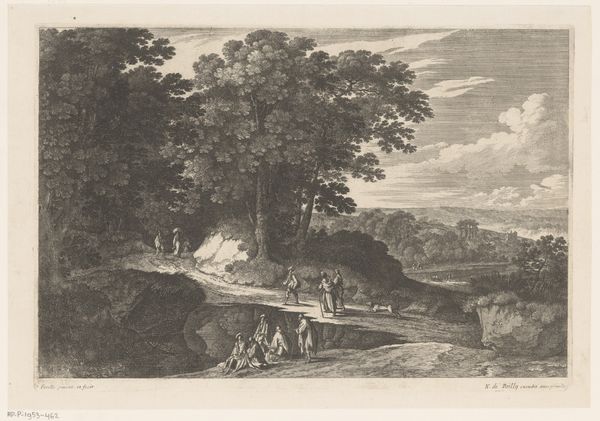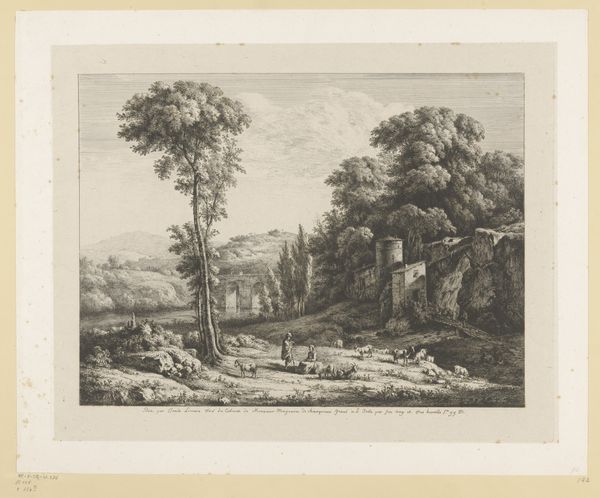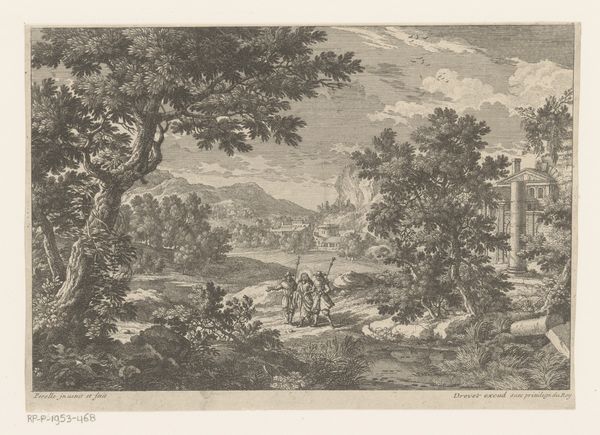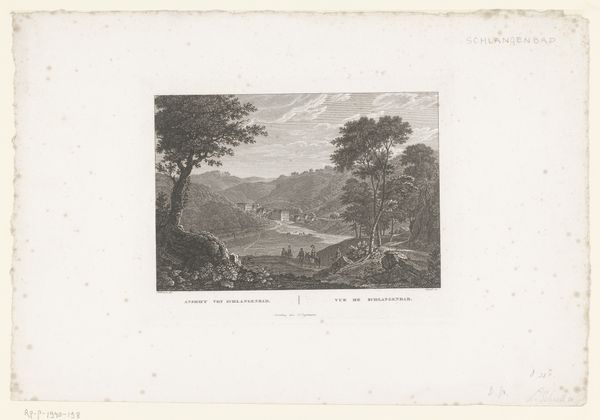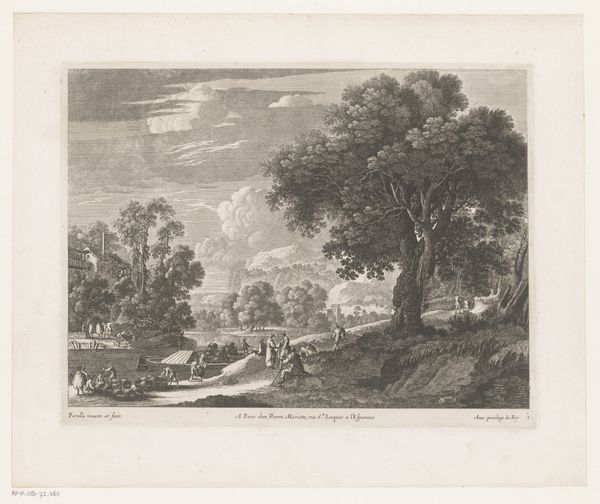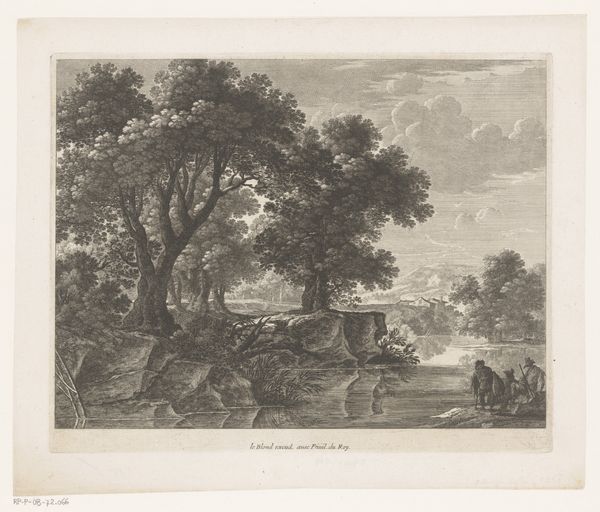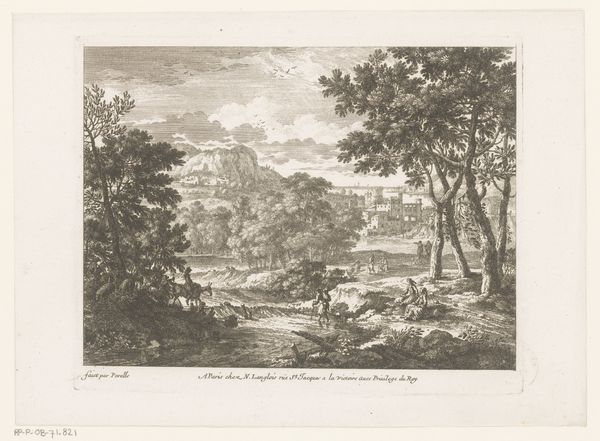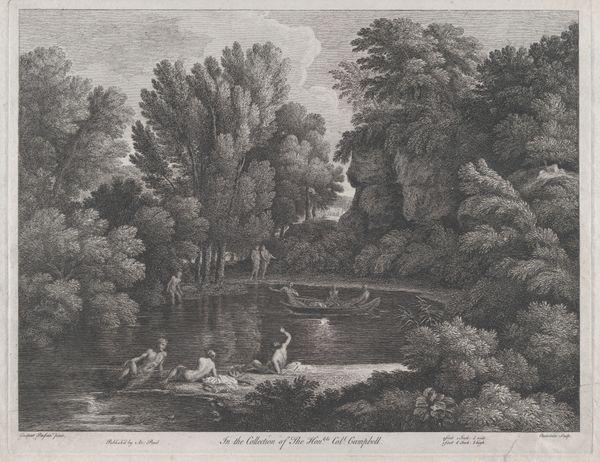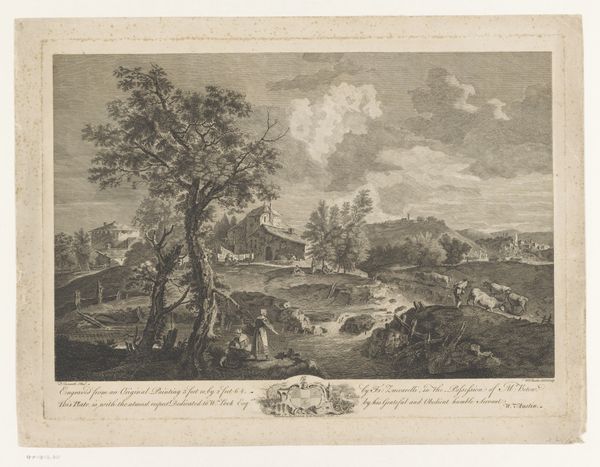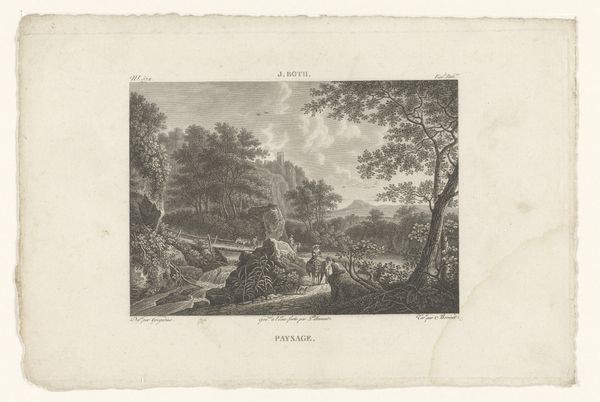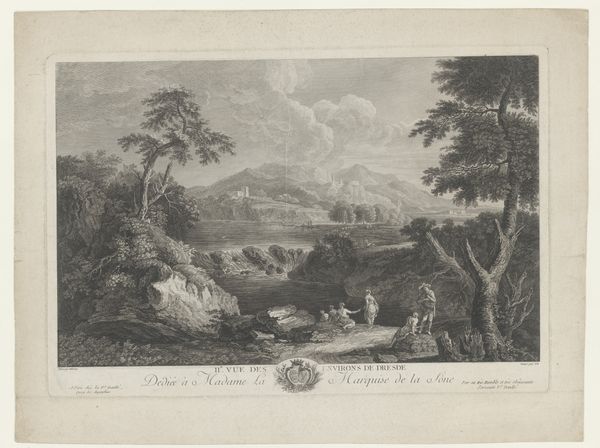
print, engraving
#
neoclacissism
# print
#
landscape
#
history-painting
#
engraving
Dimensions: height 482 mm, width 590 mm
Copyright: Rijks Museum: Open Domain
Editor: This is Friedrich Wilhelm Gmelin's "Arcadian Landscape with Grave Monuments," an engraving from sometime between 1770 and 1820. It has a sort of idealized, almost mournful feeling to it. The presence of ruins certainly contributes to that. What stands out to you in terms of how we might interpret this work? Curator: The landscape tradition frequently carries cultural memory, and here, Gmelin invokes Arcadia, which itself has become symbolic over time. Even in the Greco-Roman period, Arcadia was celebrated as a kind of paradise lost, a vision of pastoral simplicity. Do you see any visual cues that reinforce that sentiment in the engraving? Editor: The light feels very soft, and the figures are small and serene against a rather expansive background. Curator: Exactly. It’s a world where humans are a part of, but not dominating, nature. The grave monuments signal the passing of time, and the ruin of classical architecture further emphasizes that transience, doesn't it? The overall impression points towards "Et in Arcadia ego"—even in Arcadia, there I am, meaning death. What does that imply for the figures in the landscape? Editor: That they, too, are subject to time and mortality, despite being in this idyllic setting? It is quite sobering. Curator: Precisely. It's not just about an idealized past, but about recognizing the underlying melancholy and a connection between humanity, history, and nature through symbols that were well understood in its time. Editor: So, it’s not just a pretty landscape; it’s prompting us to consider deeper ideas about life, death, and memory. That’s quite powerful!
Comments
No comments
Be the first to comment and join the conversation on the ultimate creative platform.
